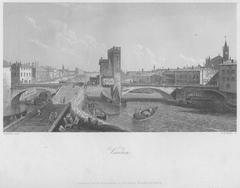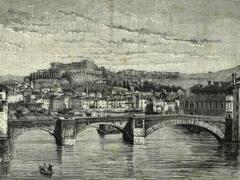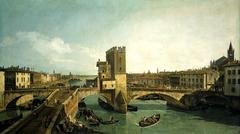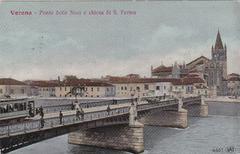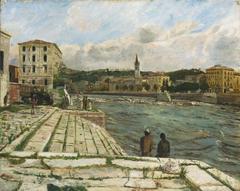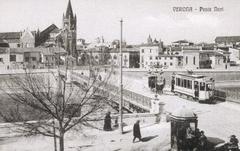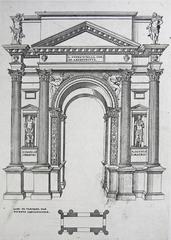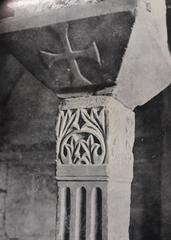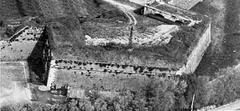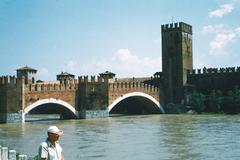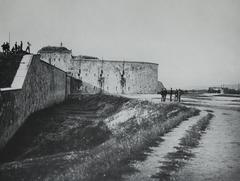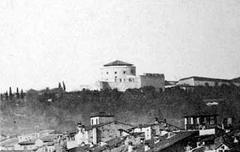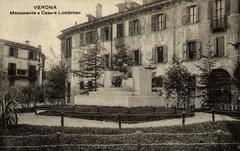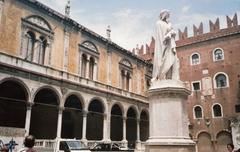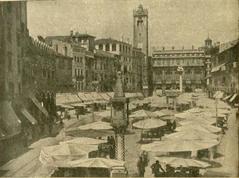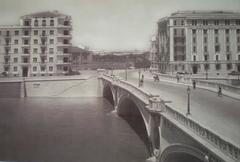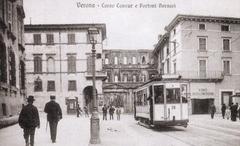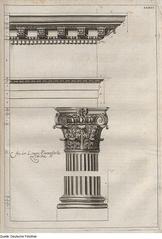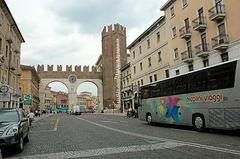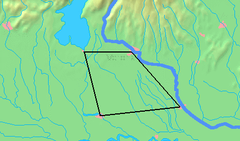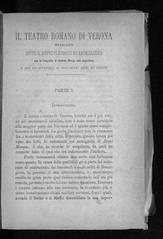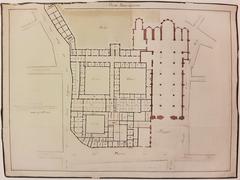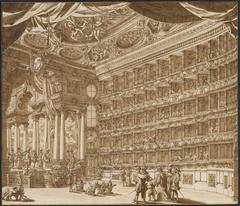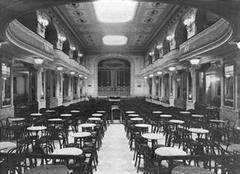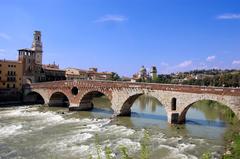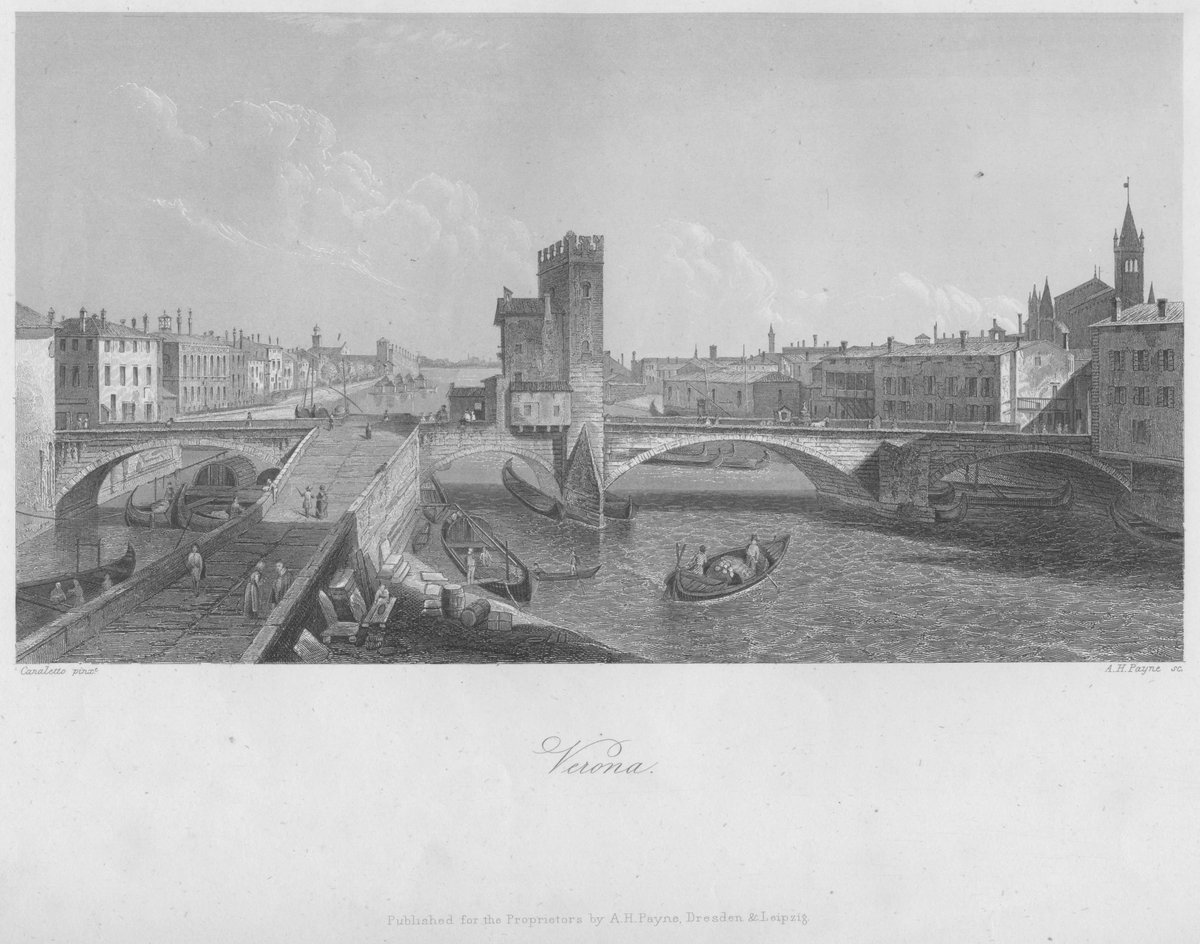
Visiting Ponte delle Navi in Verona: Hours, Tickets, and Historical Insights
Date: 23/07/2024
Introduction
Ponte delle Navi, located in the heart of Verona, Italy, is a historical gem that has stood the test of time. Tracing its origins back to the Roman era, it has been a crucial crossing over the Adige River since the 1st century AD. Initially part of the Roman road network, the bridge facilitated trade and military movements, highlighting its strategic importance in ancient times (Verona History). Over the centuries, the Ponte delle Navi has undergone numerous reconstructions, each reflecting the architectural and cultural shifts of the times. From medieval fortifications to Renaissance enhancements, and rebuilding efforts post-World War II, the bridge encapsulates a rich tapestry of Verona’s historical evolution (Medieval Bridges, Renaissance Architecture, WWII History). Today, it stands not only as a functional piece of infrastructure but also as a symbol of the city’s resilience and heritage, attracting tourists and locals alike who come to admire its architectural beauty and historical significance (Verona Tourism).
Table of Contents
- Discover the Rich History and Visitor Information for Ponte delle Navi in Verona
- Explore Ponte delle Navi - Verona’s Historical Gem – Visiting Hours, Tickets, and More
- Visitor Tips for a Memorable Experience
Discover the Rich History and Visitor Information for Ponte delle Navi in Verona
Origins and Early History
The Ponte delle Navi, located in Verona, Italy, is a bridge with a rich historical background that dates back to Roman times. The original structure was built in the 1st century AD, serving as a crucial crossing over the Adige River. This early bridge was part of the Roman road network, facilitating trade and military movements. The strategic importance of the bridge is underscored by its location, connecting the eastern and western parts of Verona, which was a significant Roman settlement (Verona History).
Medieval Reconstruction
During the Middle Ages, the Ponte delle Navi underwent significant changes. The original Roman bridge was destroyed, likely due to flooding, which was a common occurrence given the Adige River’s propensity for high water levels. In the 12th century, the bridge was reconstructed using stone, reflecting the architectural styles and engineering techniques of the period. This medieval version of the bridge featured fortified towers at each end, serving both defensive and toll-collecting purposes (Medieval Bridges).
Renaissance Modifications
The Renaissance period brought further modifications to the Ponte delle Navi. In the 16th century, the bridge was widened and reinforced to accommodate increased traffic and the evolving needs of the city. This period also saw the addition of decorative elements, including statues and reliefs, which were typical of Renaissance art and architecture. These enhancements not only improved the bridge’s functionality but also its aesthetic appeal, making it a notable landmark in Verona (Renaissance Architecture).
Destruction and Rebuilding in the 19th Century
The 19th century was a tumultuous period for the Ponte delle Navi. In 1801, during the Napoleonic Wars, the bridge was severely damaged by retreating French troops who blew up parts of it to hinder the advancing Austrian army. The bridge was subsequently rebuilt in 1824, incorporating modern engineering techniques of the time. This reconstruction aimed to restore the bridge’s structural integrity while preserving its historical significance (Napoleonic Wars).
World War II and Post-War Reconstruction
World War II brought further devastation to the Ponte delle Navi. In 1945, the bridge was destroyed by retreating German forces to slow the Allied advance. The post-war period saw a concerted effort to rebuild the bridge, reflecting both its historical importance and its role in the daily life of Verona’s residents. The reconstruction, completed in 1950, aimed to replicate the bridge’s pre-war appearance while incorporating modern materials and techniques to ensure durability (WWII History).
Modern-Day Significance
Today, the Ponte delle Navi stands as a testament to Verona’s resilience and historical continuity. The bridge is not only a functional piece of infrastructure but also a symbol of the city’s rich cultural heritage. It continues to attract tourists and locals alike, offering picturesque views of the Adige River and the surrounding historic buildings. The bridge’s enduring presence underscores its significance as a historical and cultural landmark in Verona (Verona Tourism).
Architectural Features
The current structure of the Ponte delle Navi reflects a blend of historical styles and modern engineering. The bridge features five arches, a design choice that enhances its stability and aesthetic appeal. The use of stone and concrete in its construction ensures both durability and a visual connection to its historical predecessors. Decorative elements, including statues and reliefs, pay homage to the bridge’s Renaissance modifications, while modern lighting enhances its nighttime appearance (Bridge Architecture).
Cultural Impact
The Ponte delle Navi has played a significant role in the cultural life of Verona. It has been the subject of numerous artworks, including paintings and photographs, capturing its beauty and historical significance. The bridge also features prominently in local festivals and events, serving as a backdrop for celebrations and gatherings. Its enduring presence in the cultural landscape of Verona highlights its importance beyond mere functionality (Verona Culture).
Visitor Information
Visiting Hours
The Ponte delle Navi is accessible 24 hours a day, offering visitors the flexibility to explore its historical and architectural significance at their convenience.
Tickets
There is no fee to visit the Ponte delle Navi, making it an accessible attraction for all visitors.
Travel Tips
- Best Time to Visit - Early morning or late afternoon for the best lighting and fewer crowds.
- Photography Spots - Both ends of the bridge offer picturesque views of the Adige River and surrounding historical buildings.
- Nearby Attractions - The Verona Arena, Juliet’s House, and the Castelvecchio Museum are all within walking distance.
- Guided Tours - Consider joining a guided tour for in-depth historical insights (Verona Travel Guide).
Preservation Efforts
Efforts to preserve the Ponte delle Navi have been ongoing, reflecting its status as a historical monument. Regular maintenance and restoration work ensure that the bridge remains safe and visually appealing. These efforts are supported by both local authorities and heritage organizations, underscoring the bridge’s importance to Verona’s historical and cultural heritage. Preservation initiatives also aim to educate the public about the bridge’s history, fostering a deeper appreciation for this iconic structure (Heritage Preservation).
FAQ
What are the visiting hours for Ponte delle Navi?
The bridge is open 24/7, allowing visitors to experience its beauty at any time of the day.
How much are tickets for Ponte delle Navi?
There is no admission fee to visit the Ponte delle Navi.
Are there guided tours available?
Yes, guided tours are available and provide valuable historical insights.
Visit and Stay Up to Date
For visitors, the Ponte delle Navi offers a unique glimpse into Verona’s rich history. Walking across the bridge provides an opportunity to appreciate its architectural features and the scenic views of the Adige River. Informational plaques and guided tours offer insights into the bridge’s historical significance, enhancing the visitor experience. The bridge’s central location makes it easily accessible, and its proximity to other historical sites in Verona makes it a must-visit for tourists. Follow us on social media or download the Audiala mobile app for more updates and related posts.
In summary, the Ponte delle Navi is a bridge that encapsulates the historical and cultural evolution of Verona. From its Roman origins to its modern-day significance, the bridge stands as a testament to the city’s resilience and enduring heritage.
Explore Ponte delle Navi - Verona’s Historical Gem – Visiting Hours, Tickets, and More
Introduction
Ponte delle Navi, located in Verona, Italy, is more than just a bridge. It’s a historical landmark that tells a story spanning centuries, showcasing the evolution of architecture and the rich cultural heritage of the city. This article will delve into the significance of Ponte delle Navi, its architectural features, visitor information, and tips to ensure a memorable visit.
Historical Context
Ponte delle Navi, translating to ‘Bridge of Ships,’ has been a crucial connector across the Adige River since Roman times. Originally built to facilitate trade and movement, the bridge has seen numerous reconstructions, particularly after being destroyed in World War II by retreating German forces. The present structure, completed in 1950, replicates the medieval bridge, preserving its historical and architectural essence (Verona.com).
Architectural Significance
An exemplary model of medieval bridge architecture, Ponte delle Navi features five arches, a design known for its strength and durability. The bridge blends Roman semi-circular arches with Gothic pointed arches and decorative elements, showcasing architectural evolution over the centuries. Constructed with local stone, it harmonizes visually with Verona’s surrounding buildings and stands resilient against the Adige River’s currents (Structurae.net).
Cultural and Social Importance
Beyond its architectural beauty, Ponte delle Navi is a cultural landmark pivotal to Verona’s social fabric. It connects the historic center with the vibrant Veronetta district, fostering cultural exchanges and academic interactions, particularly with the University of Verona. The bridge is a focal point for events like the annual Verona Carnival, enhancing its cultural significance (VisitVerona.it).
Visitor Information
Visiting Hours
Ponte delle Navi is accessible year-round. The best times to visit are during spring and autumn for mild weather and smaller crowds. Early mornings or late afternoons provide optimal lighting for photography.
Tickets and Tours
While there is no entry fee, consider guided tours to learn in-depth about the bridge’s history and nearby attractions. Tours often include visits to other historical sites, enriching your understanding of Verona’s heritage.
Accessibility
The bridge is pedestrian-friendly but features cobblestone pathways, so be mindful of uneven surfaces. It’s easily navigable on foot, allowing you to explore at your leisure.
Nearby Attractions
- Roman Theater - A short walk from the bridge, offering stunning city views.
- Church of San Fermo - Known for its Romanesque and Gothic architecture, it’s a must-visit.
Local Cuisine
Post-exploration, enjoy local dishes like risotto all’Amarone and pastissada de caval at nearby eateries, many of which offer outdoor seating with views of the river and the bridge.
Preservation Efforts
Verona prioritizes the preservation of Ponte delle Navi, ensuring its structural integrity and historical authenticity through regular maintenance and eco-friendly practices. These efforts ensure the bridge’s longevity while minimizing environmental impact (ICOMOS).
Educational Value
Ponte delle Navi serves as an educational resource, providing insights into medieval construction techniques and bridge design evolution. Educational programs and workshops, often held at the bridge, engage participants from school children to university students and professionals, fostering a deeper appreciation and understanding of its significance (University of Verona).
FAQs
- What are the visiting hours? The bridge is accessible all year round, but spring and autumn are the best times to visit.
- Is there an entry fee? No, Ponte delle Navi is free to visit.
- Are guided tours available? Yes, many guided tours include Ponte delle Navi along with other historical sites in Verona.
- What nearby attractions should I visit? The Roman Theater and the Church of San Fermo are highly recommended.
- What local dishes should I try? Don’t miss out on risotto all’Amarone and pastissada de caval at nearby restaurants.
Conclusion
Ponte delle Navi stands as a testament to Verona’s rich history and cultural heritage. Its architectural beauty and historical significance make it a must-visit landmark. By following the visitor tips and exploring the surrounding area, you can fully appreciate the bridge’s unique charm. Preservation efforts and educational programs ensure that Ponte delle Navi will continue to be cherished by future generations.
Call to Action
For more information on Verona’s historical sites, download our mobile app Audiala, check out other related posts, or follow us on social media for updates.
Conclusion
In conclusion, Ponte delle Navi is more than just a bridge; it is a historical landmark that offers a unique glimpse into Verona’s rich past. From its Roman origins to its modern-day significance, the bridge stands as a testament to the city’s resilience and enduring cultural heritage. Visitors can enjoy picturesque views of the Adige River, explore nearby attractions like the Verona Arena and Castelvecchio Museum, and immerse themselves in the local culture and cuisine (VisitVerona.it). The ongoing preservation efforts ensure that this iconic structure remains a cherished part of Verona’s landscape for future generations to appreciate. Whether you are a history enthusiast, an architecture aficionado, or simply a curious traveler, a visit to Ponte delle Navi promises a memorable and enriching experience (Heritage Preservation).
References
- Verona History, n.d., Veronissima source url
- Medieval Bridges, 2014, Medievalists source url
- Renaissance Architecture, n.d., Britannica source url
- Napoleonic Wars, n.d., History.com source url
- WWII History, n.d., History.com source url
- Verona Tourism, n.d., Veronissima source url
- Verona.com, n.d. source url
- Structurae.net, n.d. source url
- VisitVerona.it, n.d. source url
- ICOMOS, n.d. source url
- University of Verona, n.d. source url
- Verona Tourism Official Website, n.d. source url
- Italy’s Official Tourism Website, n.d. source url
- Heritage Preservation, n.d. source url
